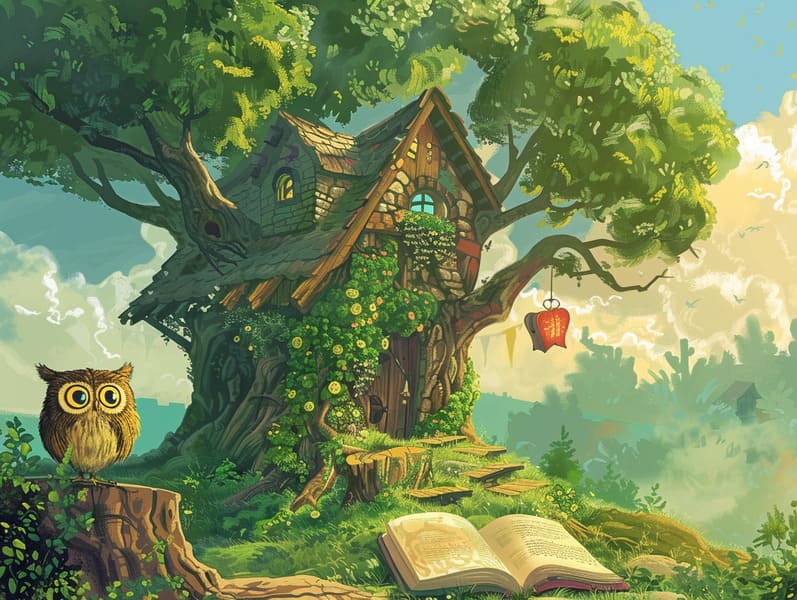
Classic fairy tales have old origins. These narratives have been relayed from one generation to the next far before they were ever transcribed. They originated from a variety of traditions, including American traditions. They were initially shared among adults, often carrying themes and messages aligned with the societal norms and beliefs of the time.
The famous Grimm duo, Jacob and Wilhelm (the Grimm brothers), were among the first to compile and release many of these beloved tales. Their published works, "Grimm's Fairy Tales," included stories like "The Story of Cinderella," "The Bread Crumb Trail," and "Little Snow White," which have since become pillars in the world of iconic fairy tales. Similarly, Andersen's imaginative tales, such as "The Sea Maid," and "The Story of the Ugly Duckling," have won hearts worldwide, guaranteeing their place in the pantheon of famous fairy tales.
Despite being ancient, classic fairy tales remain as impactful as ever, especially as children's night stories. These charming stories are now available in many formats, including vividly illustrated books, delightful animations, and internet fairy tales.
Their unwavering allure can be traced to several magical reasons:
Valuable Lessons: Classic fairy tales often whisper important moral lessons. Tales like "The Tale of the Boy Who Cried Wolf" teach the significance of truthfulness, while "The Tale of the Tortoise and the Hare" exemplify the qualities of resolve and meekness. These tales offer young readers clear distinctions between good and bad, forming their moral compass in a soft yet meaningful way.
Warmth and Understanding: Fairy tales frequently depict heroines facing tests and troubles, provoking young listeners to resonate with their struggles and support their triumphs. For instance, "The Tale of Beauty and the Beast" highlights the benefit of looking deeper to understand the inner being of a character, building empathy and perception.
Cultural Recognition: Many classic fairy tales are imbued with the cultural contexts from which they emerged. Learning from these narratives can provide enlightening views into different societies, building a sense of international awareness and perception.
Imagination and Creativity: The fantastical elements in timeless fairy tales—mythical creatures—enliven children’s innovations. These tales transport readers to enchanted realms, firing up inventive ideas and a sense of amazement that endures a lifetime.
Classic fairy tales are not only captivating but also informative. They serve as charming tools in developing various thinking and feeling skills in young ones. When timeless fairy tales are narrated, they advance verbal skills by showing new word meanings and intricate sentence structures. This practice also enhances auditory perception and focus, as young readers listen intently, expectant to see what happens next.
Furthermore, exploring the themes and characters of ancient fairy tales can improve reasoning skills and reasoning skills. The young are educated to detect patterns, foresee events, and know cause and effect. These analyses also aid the young communicate their thoughts and feelings, enhancing their emotional intelligence.
In today’s information age, the proliferation of digital fairy tales has made these fairy tales more acquirable than ever. Online platforms and mobile apps present wide arrays of traditional fairy tales that can be read or listened through anytime, anywhere. Fairy tales recited are particularly sought after, making available an charming way for children to appreciate these fascinating tales. Audio stories and read-out-loud stories take characters and settings to life, often augmented by captivating sound effects and melodies that enrich the storytelling journey.
The timeless charm of classic fairy tales lies in their ability to transform to contemporary times while retaining their essential themes. Contemporary revisions of these stories often introduce more representative characters and modern settings, making them relevant to today’s audience. However, the core values of guts, understanding, and even-handedness remain unchanged, continuing to reach young listeners of all ages.
Classic fairy tales also offer a sense of warmth and familiarity. They share a tidy narrative with a evident beginning, middle, and end, often finishing with the conclusion of conflicts and the triumph of rightness over wrongness. This consistency can be comforting for kids, making known a sense of constancy in an constantly changing world.
Classic fairy tales continue to fascinate and instruct new generations, maintaining their magic and value in modern society. As children's night stories, they disclose a perfect blend of magic and knowledge, fostering moral values, empathy, and creativity. The prevalence of web-based fairy tales and the well-liked nature of fairy tales read out loud promise that these old fairy tales remain obtainable to new generations.
By keeping and broadcasting these tales, we continue to pay tribute to the rich tapestry of tales and cultural heritage. Whether you are accessing a beautifully illustrated book, viewing a cyber collection, or listening on an audiobook, the delight of Grimm's fairy tales is always within reach. These fairy tales emphasize of the immortal essence of fairy tales and its ability to hold us together across generations and cultures.
Whether you are accessing a vibrantly illustrated book, discovering these guys a web collection, or playing an sound book, the splendor of Grimm's fairy tales is always within reach.
These narratives illustrate of the unwavering spell of stories and its ability to gather us across epochs and places, weaving a spell that charms and informs alike.
Comments on “The Evolution of Short Fairy Tales and Its Persistent Enchantment.”